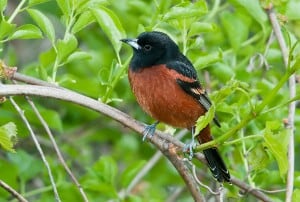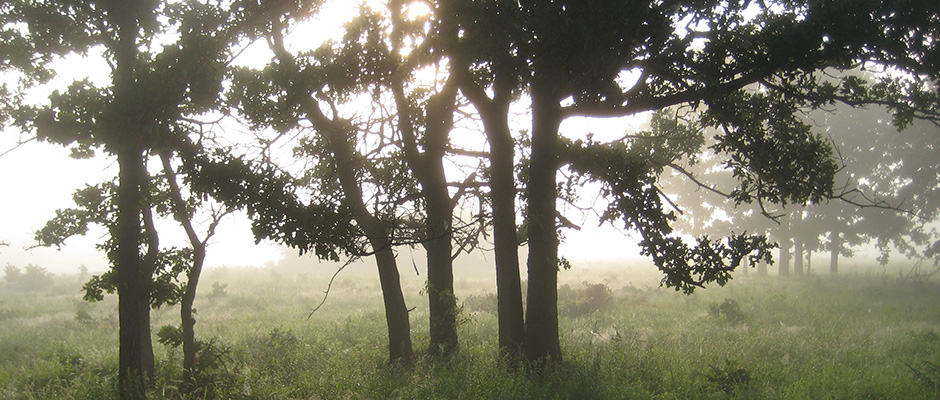Share this article
Disappearing Oak Savannas Provide Important Bird Habitat
Preserved oak savanna ecosystems in parts of Kansas, Texas and Oklahoma might provide a good idea of the biodiversity that once ranged more widely across the Midwestern United States, according to new research.
“We found that a lot of species that had population declines were using oak savanna,” said Nathan Holoubek who conducted the study published in The Journal of Wildlife Management as his master’s thesis work at Emporia State University (ESU).

The orchard oriole is one of several species that could do better with the restoration of historical oak savanna, according to a new TWS member study published in The Journal of Wildlife Management.
Image Credit: Kelly Colgan Azar via flickr
Oak savanna, characterized by small tree copses or individual trees surrounded by more open grasslands or low-growing bushes, used to cover a massive area of the country from Minnesota down to Texas. But these ecosystems were reduced almost completely due to agriculture and fire suppression strategies initiated by European settlers who moved into the region. Due to a lack of studies of this kind, not much is known about which birds may have favored these landscapes, but Holoubek said many species may have been lost as the areas disappeared.
Now, only small pockets of oak savanna remain in areas such as Kansas, parts of Oklahoma and Texas, which are often used today for cattle grazing.
Holoubek, now a wildlife biologist with the Wisconsin Department of Natural Resources and a member of The Wildlife Society and coauthor William Jensen from ESU, found that surprisingly little was known about this “extraordinarily rare ecosystem.”
By examining remnant oak savanna areas in southeastern Kansas, they developed a model to predict which species might return to restored savanna areas, and which species may be lost with more or less forest cover than what the norm had been.
Their study looked at species association across different tree density levels in oak savanna in southeastern Kansas and predicted a certain level of occupancy for different tree densities. For example, they found that species such as orchard orioles (Icterus spurius) are more likely to turn up in areas with less than 30 percent of tree cover.
Other species like Bewick’s wren (Thryomanes bewickii) and northern bobwhite (Colinus virginianus) also benefited from the more open landscapes, and Holoubek said that reductions in the tree density in areas that used to be savanna areas would improve habitat for these species.
“Restoring these areas, however small, can potentially have an impact on bird occupancy of them.”
Header Image: Image Credit: Nathan Holoubek








